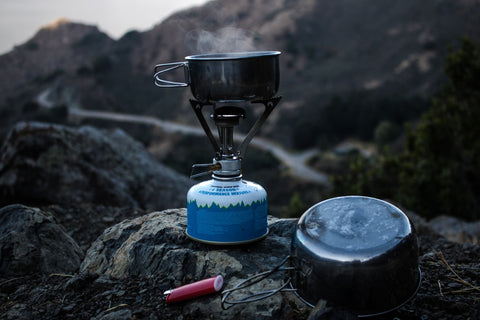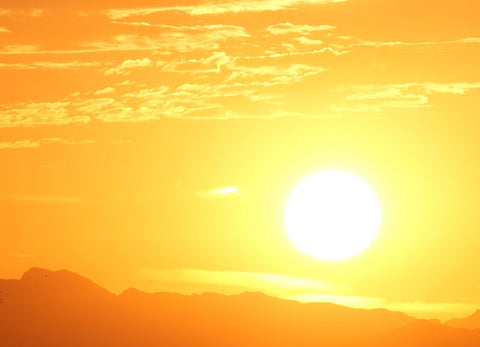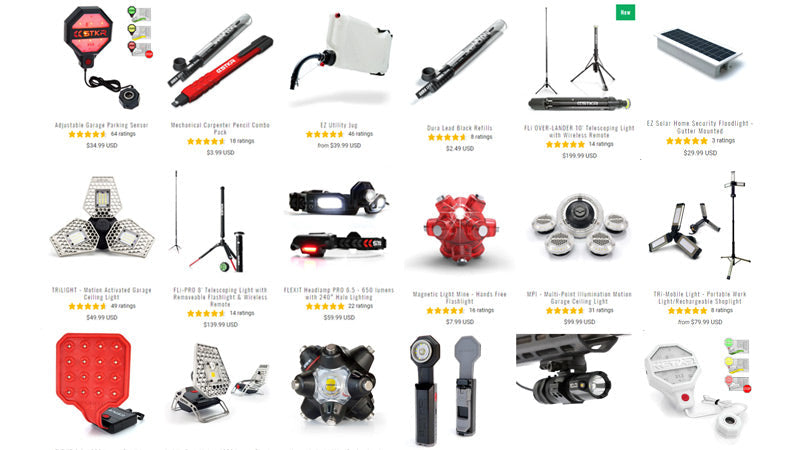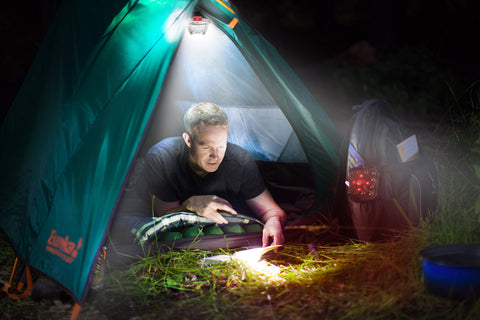
What to Take For a Backpacking Trip?
Share
Wondering if you have prepared too much or not enough stuff for a backpacking trip? No need to worry. We’ve got you covered.
Unlike any other trip, backpacking requires a lot of physical strength and endurance. From hiking to setting up your shelter, you just have to be prepared in terms of energy and materials. However, these two have to be precise in terms of quantity.
You may have brought a lot of things to allow you to survive the trip, but it will cost you too much energy to bring them all on your trip. Hence, meeting halfway is vital.
To start with, only bring essential items good for how long you will be backpacking. Create a checklist of clothes, food, water, medical supplies, sleeping essentials, lighting device, etc.
Your goal should be putting less things in your bag, yet make sure that you will meet your basic needs once you arrive at your destination.
Check out this recommended list of items to take on a backpacking trip.
Essential Items to Bring When Backpacking
It’s a rule of thumb that when a trip demands plenty of energy, you should be able to provide it by bringing what’s only necessary. But sometimes, the word necessary is relative.
A basic item for one may not be the same for the others. Hence, a checklist of materials to take when backpacking based on what the activity requires is the best reference you can look at.
-
Backpack
No one goes backpacking with any other type of bag except a backpack. It’s convenient and allows your hands to be free for better balance and grip.
The size of your backpack is an essential factor in the number of items you can put inside. They say a bigger backpack is always a wise choice.
However, when choosing a backpack with a large capacity, consider the type of materials and the weight of the bag.
You might want to take a bigger backpack, but it could add unnecessary added weight. So, it is still best to match your backpack size with how long you will go backpacking.
You can refer to this recommended backpack capacity for the type of backpacking you intend to do.
Weekend Trip – Choose a backpack with a capacity of 30 to 50 liters for 1-3 nights of backpacking.
Multiday Trip – A backpack at 50 to 80 liters will suffice for travel that lasts from 3-5 nights.
Extended Trip – If you plan to backpack for more than five nights, secure a backpack with 70 liters capacity or higher.
-
Medical Kit
Injuries can be inevitable when you go on a trip. It’s even more challenging when you go backpacking because the nearest hospital or pharmacy can be miles away.
Therefore, it is imperative to bring your very own portable medical kit.
Bring the following medicines and medical items when you backpack:
- Antiseptics like iodine pads
- Sterile bandages, cotton, and gauze
- Tiny scissors or tweezers
- Hand sanitizer
- Oral rehydration salts
- Antipyretic medicine (aspirin, naproxen, ibuprofen)
- Antidiarrheal medicine
- Pain reliever
- Allergy medication (antihistamines)
-
Flashlight or Headlamp
If you want to remember your backpacking trip as a fun and great experience, you better secure a quality flashlight or headlamp. Otherwise, you could find yourself in a nightmarish situation where you’re traversing the unknown – unless, of course, if you are a fan of the dark.
Nevertheless, a flashlight is a lifesaver when you are sleeping in the midst of the wilderness or the peak of a mountain.
You can’t always rely on stars for light, and they don’t give off enough light to keep your path lit anyway. So in this sense choosing a flashlight is crucial.
Don’t settle for decent. Instead, choose a flashlight that will remain on top of its game days after you start backpacking.
Here are your best options for flashlights to take when backpacking:
B.A.M.F.F. Dual LED Tactical Flashlight Series
These flashlights not only illuminate your path, but they also protect you from attackers in the wild as the light they produces can startle anyone. The bezzle can also be used as a blunt force weapon in an emergency situation.
Unlike ordinary flashlights, the B.A.M.F.F. Dual LED Tactical Flashlights have a dual light array that provides wide-angle and long-distance light.
It eliminates the traditional tunnel vision and enhances peripheral light. It’s also waterproof, weather-resistant, and lightweight.
Portability and flexibility are two of the best features of the FLEXIT Pocket Light.
If your priority is a flashlight, you can just clip on your waist or hang on a branch. The pocket light is exactly what you’re looking for.
With up to 650 Total Lumens and a runtime that can last for up to 72 hours, you can expect sufficient lighting for long hikes.
Another exceptional feature of the FLEXIT Pocket Light is its multiple light array modes, including a red night vision mode.
If it’s hands-free lighting you’re looking for, then the FLEXIT Headlamp PRO is your best option.
This innovative headlamp consists of halo lighting with a long-distance spotlight and wide-angle floodlight. Thus, eliminating the tunnel vision and keeping your head in the same direction as you continue hiking.
It also has an adjustable spotlight, red night vision, and independent controls as well as variable brightness.
-
Weather-proof Clothing
One of the things you need to include in the planning stage of your backpacking is knowing the weather in your destination. This information sets your expectations regarding the living condition you will have to endure once you set up your camp.
Also, it allows you to prepare proper articles of clothing to keep you weather-proof.
Nevertheless, backpacking clothes require almost the same standards entirely. Here’s how to choose your clothing for backpacking.
- Breathable
- Waterproof and windproof
- Has UV protection factor
- With insulation
- Lightweight
The theme of your backpacking clothes is comfort. Sure, a good fashion sense is always good, but it should be the least of your concerns when it comes to this outdoor trip.
If the trekking road to your destination is rocky or simply requires scaling or gripping, wearing fitting gloves could be necessary. A comfortable set of gloves like Tough Skin can protect your hands from blisters, wounds, and calluses.
-
Tent
Setting up your shelter for the next few nights is a critical part of your backpacking experience. So naturally, you will need a proper tent for this.
The type of tent pretty much determines the level of comfort you’ll get when camping and the general atmosphere of your living conditions. Consider the following when buying a tent for backpacking:
Weight
While tents look massive when assembled, they can be lightweight. However, this feature may not be equal or even true to every tent you see at the store.
It is also why buying at the store is preferable to buying them online. Unless, of course, if you are familiar with the brand. If you purchase a tent yourself at a physical shop, you’ll get the chance to test its weight.
Capacity
Sharing a livable space during backpacking or camping can be ideal for saving you the trouble of bringing and assembling too many tents.
But if it’s a personal choice to have your own tent, it’s not a problem. Therefore, check if it fits the capacity requirement you need when choosing a tent, whether it’s a two-person or single-space tent.
Materials
Make sure the tent you buy is waterproof, weatherproof, and made of durable materials.
Setting up in the forest or at the camp base means exposing yourself to potential harm and damages within the environment.
That’s why it is best to choose a tent made of materials that could protect and endure the harshness of the outdoor atmosphere.
-
Sleeping bag
If you intend to get a night of good sleep, at least when backpacking, make sure you bring a comfortable but lightweight sleeping bag.
The ideal weight for a sleeping bag is said to be under two pounds. This metric ensures that the added weight will not critically impact the total weight you carry when trekking.
Your sleeping bag should have a temperature that suits your comfort. Insulation should be sufficient, and the weight should not be an added burden.
Padding and stash pockets are also additional features you’d like to have.

Photo by Sage Friedman on Unsplash
-
Portable Cooking Equipment
Backpacking is driven by energy. Naturally, your energy comes from food.
While it is unlikely that you get to prepare a gourmet dinner when backpacking, you still deserve tasty and healthy meals, at least. To achieve that, you will have to bring several portable cooking and eating tools.
- Compact camp stove and fuel
- Cookware
- Reusable dinnerware
- Utensils
- Collapsible water bottle
- Food containers
- Trash bags
The first two things you need to consider when choosing cookware or dinnerware to bring are portability and lightness.
Fortunately, shops have the abovementioned cooking items designed for backpacking or camping.
-
Hiking Footwear
A good pair of hiking shoes or hiking boots are a great investment for backpacking.
The rough terrain you need to traverse is no joke. Hence, you need appropriate quality footwear.
Although personal preference for design or brand often plays a part in your selection process, you must first consider crucial features.
For example, the type of outsole pattern matters. Boots with lug patterns have deeper and thicker lugs that improve grip, especially with trekking paths that can be slippery.
Moreover, the internal support, crampons, midsoles, and uppers should be comfortable enough for long hours of backpacking.

Photo by Les Argonautes on Unsplash
-
Food Supplies
Food is an absolute necessity when backpacking or any other activity for that matter. But the food you bring should match the energy and convenience you need.
Lightweight and portable foods are the way to go. So, bringing piles of meat is quite impractical.
Your best options are the following types of foods:
- Jerky
- Nuts and seeds
- Dehydrated meals
- Instant Oatmeal
- Protein bars
- Protein in Foil Packets or smaller portions
- Preserved meats
- Hard cheeses
- Spices
- Dried Fruits
Pack a variety of food to ensure you get the calories you require.
Furthermore, consider the number of days you are backpacking and use that as a reference to packing enough food for the trip.
It is pretty upsetting and alarming if you run out of food.
On the other hand, excessive weight could bring you down when backpacking. Hence, the perfect solution is to plan your meals ahead of the trip.

Photo by Martin Sanchez on Unsplash
-
Water
One of the things you should never forget when backpacking or hiking is water. Hydration is a critical part of any outdoor activity.
But the amount of water you need to secure depends on the distance of the trail and the hours you need to hike.
One liter of water for a 2-hour backpacking trip is a good rule of thumb. However, you need to consider other factors for your water needs, such as age, sweat rate, etc.
Among the necessary items you need to carry backpacking, you shouldn’t limit your water intake, mainly if it will prevent you from moving forward.

Photo by James Day on Unsplash
-
Sun Protection
Your clothing primarily protects you from the weather and the heat of the sun.
However, it is still imperative to put on some sunscreen and wear headgear to protect you from scorching sunlight. You can also have sunglasses for extra protection against glare.

Photo by Carter Yocham on Unsplash
-
Knife
You can never underestimate the multiple uses of knives when backpacking.
First, it provides added protection for your safety. You can use it to cut food, open packets and camp meals, cut ropes, cut branches, and more.
It goes without saying, but a folding knife is your number one choice for backpacking or any outdoor activities.
Do not bring regular kitchen knives, as they can cause more harm than good when you’re trekking.
Consider a multi-tool knife or a Swiss Army Knife that comes with other folded tools such as scissors, saw blades, nail files, screwdriver, tweezers, etc.

Photo by Ben Lambert on Unsplash
-
Fire Starters
Fire is an essential part of backpacking or camping. Hence, creating fire should be a skill you’re prepared to use.
While it is pretty interesting to start a fire from scratch, in most cases, it’s preferable to use fire starters to do it fast. You can bring classic fire starters such as a lighter or matchsticks.
Likewise, you can choose to bring fire starter kits that come with cotton wool, petroleum jelly, lighter, waterproof matchsticks, Ferro rod, etc.

-
Navigation Tools
A clear direction is crucial for a successful backpacking trip. While the GPS app is always a good tool for navigation, it may not be completely accessible if you are hiking in obscure remote areas.
Your best option is to bring a good old compass. If you have a GPS receiver, by all means, take it with you when backpacking.
Moreover, make sure you have your watch with you, a whistle, and an altimeter.

Photo by Markus Winkler on Unsplash
-
Power bank and Extra Batteries
Most electronics nowadays are rechargeable. These include lighting devices, your phone, and more.
So, bringing a portable power bank or extra batteries if you have a device that relies on swappable power is essential to have a steady source of power.

Things You Shouldn’t Bring When Backpacking
While we stress the essential items to bring when backpacking, it is also imperative to identify things you shouldn’t bother bringing on the trip.
At times, you may be tempted to add more stuff or use inappropriate items that are more accessible, but there could be more consequences than you think.
Check out the following items you shouldn’t bring when backpacking.
-
Excessive Clothes
It may be fun taking pictures during your backpacking trip with different outfits. But as mentioned earlier, comfort goes on top of fashion when it comes to clothing. Bringing lots of clothes can literally weigh you down.
-
Jewelry
-
Inappropriate Shoes
-
Heavy Lighting Devices
-
Bulky Books
Summary
Backpacking requires only essential items. Otherwise, you will be burdened with extra weight from unnecessary stuff, making your trip less fun than it should be.
Before the date of your backpacking trip, make sure to have a checklist of the necessary items that fit the number of days and type of terrain you will hike on.











